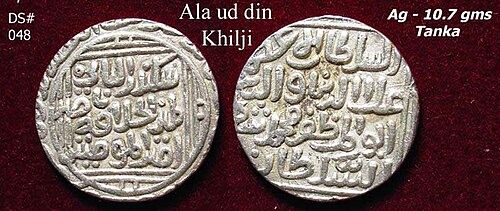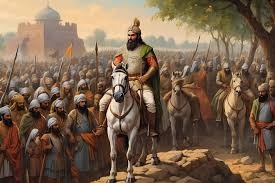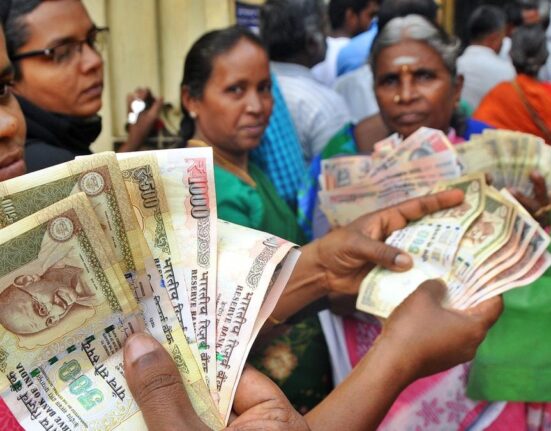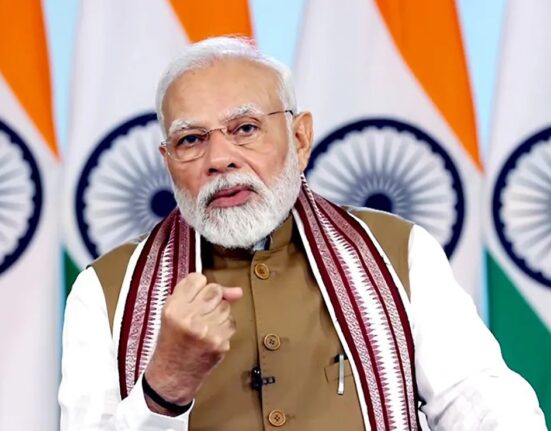Introduction
Alauddin Khalji was one of the most powerful and transformative rulers of the Delhi Sultanate, reigning from 1296 to 1316 CE. His rule is marked by extensive military conquests, innovative administrative reforms, and significant defense against Mongol invasions. Alauddin greatly expanded the Sultanate’s territory, notably conquering parts of Rajasthan, Gujarat, Malwa, and southern India. His reign is also notable for radical economic policies, market regulation, and ruthless suppression of potential threats, reflecting his focus on centralized authority and military strength.

Rise to Power
Alauddin Khalji was the nephew and son-in-law of Sultan Jalal-ud-din Khalji, whom he assassinated in 1296 to seize control of the Delhi Sultanate. Before his ascension, Alauddin had earned renown through a successful raid on Devagiri (in the Deccan) in 1296, where he looted vast wealth which later helped fuel his rapid consolidation of power.
Military Expansion and Campaigns
Alauddin Khalji aggressively expanded the Delhi Sultanate’s frontiers:
- Rajputana Conquests: He launched campaigns to subdue the Rajput kingdoms, capturing Jaisalmer (1299), Ranthambore (1301), and Chittorgarh (1303). These victories helped bring northern India’s principalities under Sultanate control.
- Malwa and Gujarat: His forces conquered the Paramara kingdom of Malwa in 1305 and Gujarat soon after. The plunder of Gujarat was especially lucrative, securing the Sultanate’s access to rich ports and boosting the treasury.
- Southern India Expeditions: Ace general Malik Kafur led expeditions deep into southern India, defeating kingdoms such as Warangal, the Hoysalas, and the Pandya dynasty. The campaigns yielded large war booties, including rare treasures like the famed Koh-i-Noor diamond.
- Defense Against Mongols: Alauddin successfully repelled multiple Mongol invasions (1297-1308), notably at battles like Jaran-Manjur, Sivistan, and Delhi itself, consolidating the Sultanate’s northern frontiers.
Administrative and Economic Reforms
Alauddin’s reign is distinguished by groundbreaking reforms aimed at sustaining his military campaigns and consolidating central power:
- Taxation and Revenue: He imposed heavy agricultural taxes (increased by up to 50%) and introduced new levies including the Jizya tax on non-Muslims, grazing fees, and war booty shares. He abolished intermediaries like rural chiefs, collecting revenue directly from cultivators.
- Price Control and Market Regulation: To sustain the army and prevent inflation, Alauddin established strict price controls on essential goods, including grains, livestock, and slaves. Markets (shahana-i-mandi) were regulated with exclusive permits granted to select Muslim merchants, operating under rigorous supervision enforced by a network of spies (Munhiyans). Violators faced brutal punishments.
- Rationing and Storage: Private food storage was banned to prevent hoarding. The Sultanate maintained granaries to ration supplies, prioritizing soldiers and city officials during famines, though ordinary farmers suffered.
These measures helped stabilize markets for the military and urban populations but adversely affected peasants, leading to declines in agricultural productivity and recurring food shortages.
Military Reforms and Organization
- Alauddin is credited with creating one of India’s earliest professional standing armies. His military was well-disciplined, loyal, and equipped for rapid campaigns.
- He employed branding of horses to curb fraud and ensure quality in cavalry mounts.
- Strategic forts and defensive outposts were fortified to secure the Sultanate’s vast borders.
- Alauddin appointed capable commanders like Malik Kafur, Nusrat Khan, and Ulugh Khan, who were instrumental in his military successes.
Ruthlessness and Rule
To eliminate threats, Alauddin Khalji pursued a policy of ruthless repression:
- He ordered the massacre of thousands of recently converted Muslims near Delhi in 1298, fearing rebellion.
- Members of his own family suspected of disloyalty were blinded and executed.
- He took severe measures to prevent conspiracies, including spying on the nobility and enforcing harsh punishments.
Religious and Cultural Policy
Though a Muslim ruler, Alauddin practiced a degree of pragmatism:
- He sponsored Islamic institutions but also ordered the plunder and destruction of some Hindu temples (notably in Gujarat), while others remained intact.
- His invasions of the south exposed the Sultanate to diverse cultures, accelerating the exchange of ideas, art, and religious practices across the subcontinent.
Legacy and Impact
Alauddin Khalji’s reign left a long-lasting imprint:
- Expansion of the Delhi Sultanate: He vastly increased the Sultanate’s size, making it a dominant power in India.
- Administrative Innovations: His taxation, market control, and army reforms influenced future rulers and set precedents in governance and military organization.
- Military Security: Successfully defending against Mongol invasions preserved Indian political sovereignty at a critical juncture.
- Socio-economic Consequences: While his economic controls ensured a strong military, they negatively impacted peasants and markets, contributing to famines and social strain.
- Historical Reputation: Historians describe him as a tyrant for his harsh rule, but also recognize his skill as a warrior-statesman who transformed medieval India’s political landscape.

Interesting Facts
- Alauddin Khalji’s general Malik Kafur, originally a Hindu slave, rose to become a trusted commander and led key southern campaigns.
- The plunder from southern India included the Koh-i-Noor diamond, one of the largest diamonds known in human history.
- Alauddin’s strict market regulations involved cutting flesh as punishment for price violations.
- His victory over multiple Mongol invasions was crucial in safeguarding India from Central Asian incursions during his era.
Conclusion
The reign of Alauddin Khalji (1296–1316 CE) was a defining era for the Delhi Sultanate, marked by vast territorial expansion, visionary yet harsh reforms, and a determined defense against external threats. His combination of military prowess, administrative innovation, and uncompromising authority transformed the Sultanate into a formidable empire in the Indian subcontinent, influencing the course of medieval Indian history profoundly.








Leave feedback about this